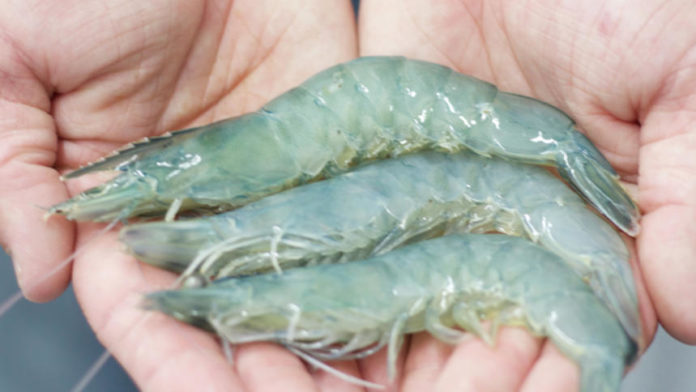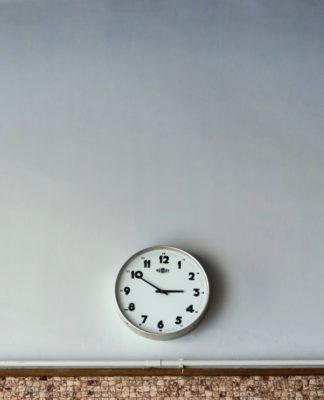
Listen up all seafood lovers, especially those of you that love the tasty bug of the sea known as shrimp: An enormous shrimping operation is about to hit Minnesota shores.
Shores? What shores?
Well, Minnesota may not be on a coast, but shrimping is a pretty big thing here: Minnesota is already home to Northern Tide Farm LLC, a shrimp farm in Elgin, MN that produces Pacific White Shrimp to sell to the public.
Now, in the small town of Balaton (population 643 as of the 2010 census), Tru Shrimp has opened a research facility and headquarters, looking to expand their operations with the building of a training facility, hatchery, and two harbors.
In this article from the Grand Forks Herald, Robert Gervais, an operations manager at Tru Shrimp Systems, is quoted as saying
“Our goal is to become the shrimp capital of the world.“
Here. In Minnesota.
Seafood is big business in the United States. We’re second only to China in seafood consumption. The average American eats five pounds of shrimp a year. The National Oceanic and Atmospheric Administration website on fisheries explains that over 91% of our seafood in the United sates is imported; we are the largest importer of fish and fishery (seafood) products in the entire world, and over half of our imported fish and fishery products is grown through the same means that Tru Shrimp Systems uses (known as aquaculture).
The largest issue with importing all shrimp from other countries is quality control: By importing, we are ultimately stuck in a “buyer beware” situation. According to Michael Ziebell, President and CEO of The tru Shrimp Company, about 80% of our shrimp comes from aquaculture ponds in Ecuador and southeast Asia, and,
“These ponds, for decades, have been riddled by disease… Our system mitigates the risk of disease.”
The system that will be used here uses all natural feed stuffs, and no antibiotics. And the shrimp produced will be traceable through the supply chain.
But the question remains: “Why are you building these facilities in Minnesota of all places?”
You would think with our harsh winters that Minnesota would be the last place a company would want to grow shrimp. But the reason is simple: The food supply for the shrimp is plentiful here.
As Michael Ziebell said news release found on their website,
“We are often asked why raise shrimp in Minnesota, and the answer is because the feed is here. Economically and environmentally it makes much more sense to raise shrimp near their food source than to ship feed to shrimp raised in coastal ponds thousands of miles from the U.S. market. Until now, the technology to effectively raise shrimp in the Midwest United States on a large scale did not exist; now it does and we have proven it.”
The diet used to feed the shrimp is 45% soybeans. A U of M Study projects that this diet for the shrimp could affect the price of soybeans by as much as 15 cents per bushel produced by farmers. According to this article from feedstuffs.com, the building of this facility will also impact other feed commodities other than soybeans such as corn and hard red wheat.
The first harbor will be built in Luverne, Minneasota at a cost of $50 million+. A second harbor is planned for Marshall, Minnesota at a later date. An economic impact study conducted by the University of Minnesota is showing that the construction of just one harbor will result in over $48 million in economic contributions to the area. The construction of the bio-secure facility will result in $14.5 million in labor, and support an estimated 330 jobs. After construction, a harbor will continue to generate an estimated 23 million dollars annually and employ about 124 through direct and indirect employment.
Once a harbor is built, however, it can take up to a year for them to start producing shrimp for the market. Before the harbor construction starts, there will be a need for a hatchery to be built and become operational and lay the groundwork/ The plan is for the first harbor in Luverne to begin construction in the spring of 2018; ultimately taking up 9 acres of land and producing about 75 million shrimp initially, and about 150 million shrimp once it is fully operational.
The harbors grow shrimp in basins about the size of school buses in shallow water. This allows the people operating the facility to know exactly how many shrimp are in each basin, and they won’t have to worry about the stacking of water killing shrimp that are at the bottom (shrimp are delicate and the very weight of the water kills them if they are too deep in a tank).
For the harbor facility in Marshal, the Tru Shrimp Company will be renovating vacant processing plant. This USDA-approved processing facility will process an estimated 8 million pounds of shrimp per year was completed.
Beyond the production of shrimp will be the production of Chitosan: Chitosan is made from the molts (shells) of shrimp, and, according to this article from The National Center for Biotechnology Information, it is used in many biomedical applications such as tissue engineering, drug delivery systems, wound healing, water treatment, and more.
The Tru Shrimp Company’s establishment of operations in Luverne and Marshall will certainly create an economic boom for these towns, as well as the surrounding areas. For example, their need for grain to produce shrimp will help farmers. Their need for transporting their product will help local transportation companies keep their drivers busy. It will also bring Minnesota into the spotlight as an innovator and leader in producing shrimp though aquaculture. This could also lead to the mass production of other seafood in Minnesota such as Tilapia and Salmon.
The future looks bright for shrimp production in Minnesota. And Minnesota shrimp lovers will be able to rejoice in the lowered cost of shrimp due to local production.
Everybody wins.
















